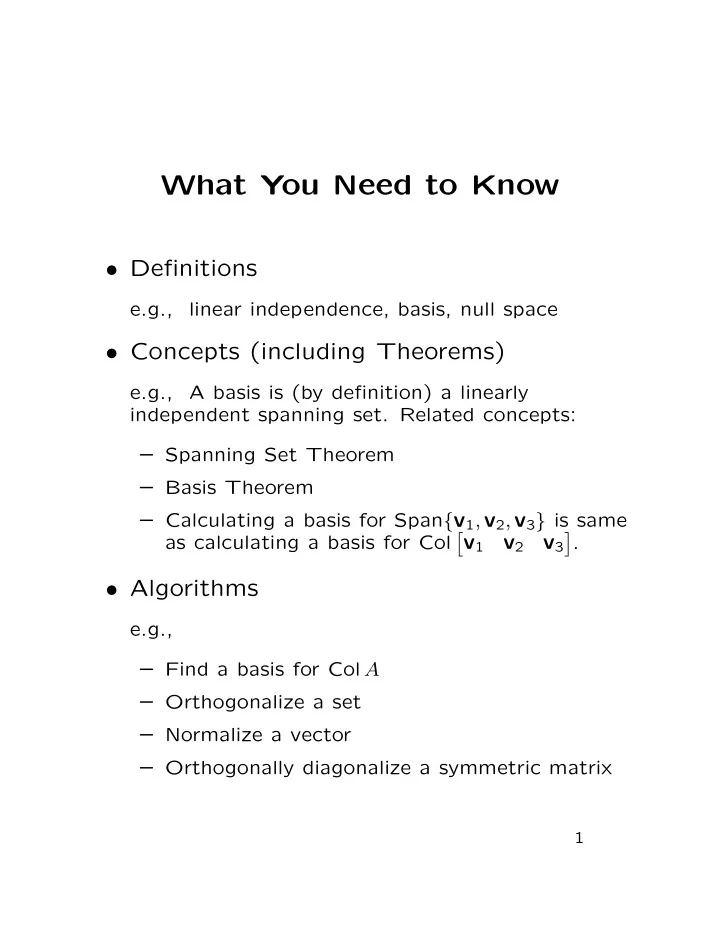

What You Need to Know • Definitions e.g., linear independence, basis, null space • Concepts (including Theorems) e.g., A basis is (by definition) a linearly independent spanning set. Related concepts: – Spanning Set Theorem – Basis Theorem – Calculating a basis for Span { v 1 , v 2 , v 3 } is same as calculating a basis for Col � � . v 1 v 2 v 3 • Algorithms e.g., – Find a basis for Col A – Orthogonalize a set – Normalize a vector – Orthogonally diagonalize a symmetric matrix 1
Advice on Definitions 1. concentrate on important ones What’s important? Well, I’ve mentioned “basis” and “eigenvector” about a million times each. Look in the index, too. 2. memorize the concept, not the wording Advice on Concepts 1. geometric interpretation can help (but don’t get obsessed with it) 2. look at “theory questions” on quizzes and in homework 3. try to make new connections e.g., rank equals number of pivot positions, so if rank equals number of rows of m × n matrix, then its columns span all of R m , so Col A = R m . 2
Advice on Algorithms Look at the quizzes (and homework): Quiz Algorithms 1 – solve linear system – is w ∈ Span { u , v } ? 2 – solve homogeneous – use to solve nonhomogeneous – is set linearly independent? 3 – find standard matrix 4 – invert 2 × 2 – determinant by cofactor expansion inverse using � I � – A 5 – get inverse/determinant with EROs 6 – find basis for Col A , Nul A 7 – determinant of triangular matrix – find eigenspace basis – diagonalize 2 × 2 8 – project v onto Col A find (Col A ) ⊥ 9 – – find least-squares solutions – perform QR factorization – orthogonally diagonalize matrix 3
Recommend
More recommend